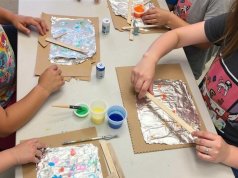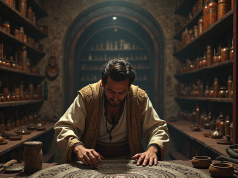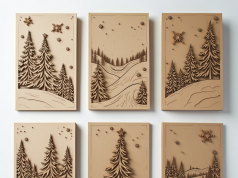Threadgraphy is. is an amazing artistic technique that turns ordinary thread into a tool for creating abstract patterns, realistic textures, and even portraits. In this guide, you will learn:
✔ What threads work best (from wool to silk).
✔ The 3 basic threading techniques with step-by-step instructions.
✔ How to create complex works in technique "pulling the thread".
✔ Ideas for inspiration - from simple postcards to paintings.
🧵 Selecting materials
1. Thread:
-
Cotton - give clear lines (ideal for beginners).
-
Woolen - create three-dimensional "fluffy" footprints.
-
Silk - for smooth color transitions.
-
Mouliné - bright colors, you can separate into thin strands.
2. basis:
-
Smooth cardboard or watercolor paper (will not warp from moisture).
-
Canvas is for layered works.
3. Paints and glue:
-
Gouache or acrylics are good at sticking to threads.
-
PVA glue - for fixing complex compositions.
🎨 3 basic techniques of thread printing
1. Footprint method (easy way for children)
-
Wet the thread in the paint (you can dip or roll with a brush).
-
Lay it out on half a sheet of paper in any shape you like.
-
Cover with the other half of the paper, press down with the palm of your hand.
-
Pull the end of the thread - to create a symmetrical pattern.
Tip: Use different colors on the same thread for an ombré effect.
2- Pulling technique (for abstractions)
-
Apply drops of paint to the base.
-
Attach the dry thread, leaving the long end free.
-
Pull the thread slowly, "smearing" the paint.
-
Repeat with new colors - the layers will blend together.
3. three-dimensional thread printing (for advanced)
-
Draw a sketch in pencil.
-
Glue the threads along the outline to the ribbing (use PVA).
-
Fill the inner sections with parallel coils.
-
Cover with varnish for preservation.
🌿 Creative ideas
-
Trees - Brown threads for the trunk, green "blotches" for the crown.
-
Space - Dark background + shiny threads with silver paint.
-
Animals - use woolen threads for a furry effect.
💡 Useful tips
✔ For fine lines - twist the thread before painting.
✔ Correct mistakes - while the paint is wet, blot the area with a tissue.
✔ Create a gradient - Dip different sections of the thread in different colors.
Threadgraphy: opens up endless creative possibilities. Try starting with simple prints and you'll be surprised at the masterpieces you can create without brushes!
Share your work in the comments - the most unusual ones will be published in our gallery!
Want more out-of-the-box techniques? In the next master class. «Ice painting: how to use frozen paint«! 🎨✨











